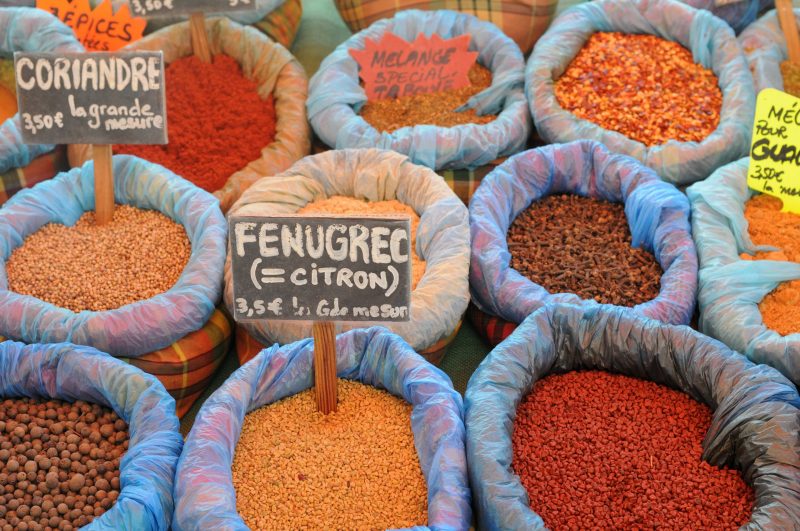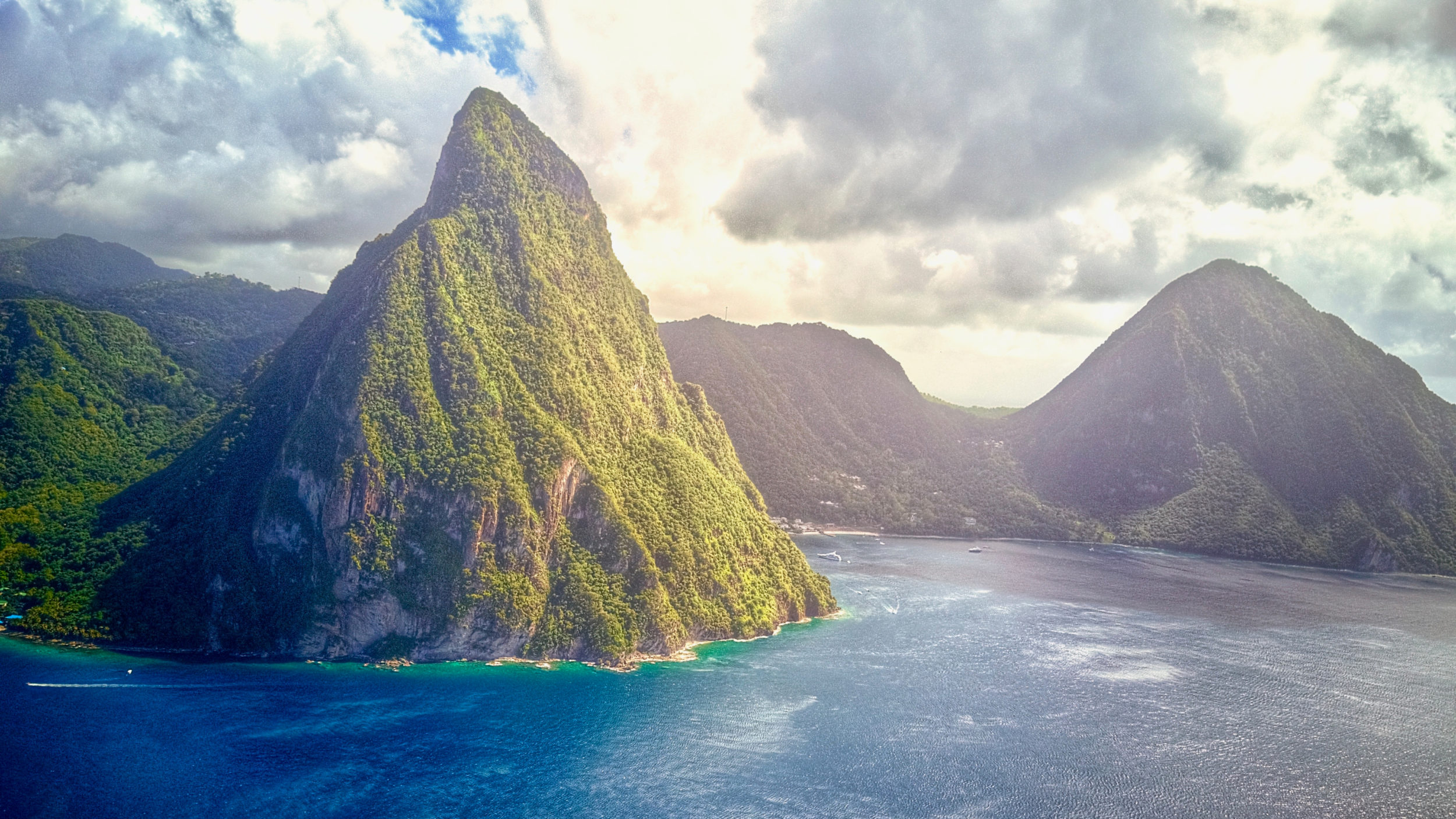HIGHLIGHTS





DUE TO CURRENT COVID RESTRICTIONS WE ARE SUSPENDING OUR TIME IN MARTINIQUE. WE WILL UPDATE IF THIS CHANGES.
Get Your Bearings
Martinique and St Lucia are two islands that feel a little lost in time, due in large part to their rich mix of luscious rainforest topography and unique cultural and historical features. Each has its own special blend of Caribbean life without the hordes of tourists and bays cluttered with cruise ships.
Martinique
Martinique is a rugged Caribbean island that’s part of the Lesser Antilles. An overseas region of France, its culture reflects a distinctive blend of French and West Indian influences. One writer at the New York Times found himself using the word “serendipity” to often describe the island. A place full of sweet, unexpected surprises.
Saint-Pierre
The city of Saint Pierre looks like a town in France was dropped in the Caribbean and then nearly washed away by the sea. Which is very close to the truth. The cobblestone streets and paint-worn buildings we see today were once part of a thriving port town before the volcano, Mount Pelée that towers over the city, erupted in 1902 and killed 30,000 people. The tragic but fascinating story inspired much of what we know about volcanic activity today.
We can visit the museum dedicated to the eruption and see ruins of the old stone buildings that still line the streets. We can also dive 12 shipwrecks in the bay that sank after being set ablaze by the volcano. Today, the bay is know around the world as the richest shipwreck diving site in the entire Caribbean.
Saint Pierre is a good town to brush up on your basic French skills, as we met very few people that spoke English. Bonne chance!
Fort de France
Spend some time in vibrant Fort de France, the island’s capital and by far the biggest city in the French West Indies. It’s a popular destination for international yachties and French tourists, known for colonial architecture, ornate iron balconies, tropical flowers and beaches.
La Savane park has a statue of Napoleon I’s wife Joséphine, a native of the island. Exhibits at the Martinique Museum of Archaeology and Prehistory focus on the island’s history, especially the pre-Columbian period.
Jardin de Balata is a tropical garden oasis high in the hills with a unique and serendipitous history. Stunning views, a panoramic rope bridge walk through the trees, humming birds, and a peaceful oasis that gives a real sense of the abundant vegetation, both native and generally tropical.
Fort Saint Louis—the hulking fortress that gave the city its name—lies on the far side of La Savane and dates from 1640, although most of what stands today is the result of subsequent additions. Guided tours are informative and fun.
The Grand Marché is a colorful, aromatic covered market. Here you can stock up on crafts, souvenirs, spices, rum and trinkets. At the rear are several decent Creole eateries.
Les Anses d’Arlet
Without a doubt the most charming corner of southern Martinique, Les Anses d’Artlet retains an undiscovered feel, some gorgeous scenery and wonderful beaches. The villages are connected by an often steep and winding coastal road that offers superb glimpses down to the waves below.
Plage Anse d’Artlet is a gorgeous stretch of dark, golden sand in front of Anse d’Arlet Bourg, is backed by the village’s 18th-century church, and is one of the loveliest places to swim in Martinique. The beach is bookended by restaurants and bars, and it’s rarely difficult to find your own spot beneath the various trees that back the beach.
Dine in a Caribbean rainforest at the lush L’Escale, the top-rated restaurant in town. Pair a nice bottle of wine with the rich ambient lighting and the highly recommended snapper with chorizo entreé for an evening to remember.
Le Diamant
This quiet, scattered town is the perfect anchorage for scuba dives at Le Rocher du Diamant (Diamond Rock).
Diamond Rock is thought to be the most beautiful dive site in Martinique, and one with a strong reputation all over the Caribbean. This immense volcanic rock towers over 550 feet high and stands over a mile from the coast. There are sites for everyone depending on your dive certification and your experience. To the north, a sheltered cove is ideal for first timers; for experienced divers, a beautiful drop-off plummets down to 130 feet along the rock. To the west, a breathtaking cathedral-shaped crack starting around 50 feet actually pierces the whole island from side to side.
The diversity and abundance of marine life are astonishing, matching the dramatic geological features: many different tropical reef fish, turtles, moray eels, Spanish mackerels, crustaceans hidden in the crevices. The flora is also quite diverse with gorgonian fans, soft corals, sponges, anemones.
On land at Le Diamant is the haunting Mémorial Cap 110, which lies on a grassy headland overlooking the sea and is made up of 15 Easter Island–esque figures in stone, heads hung in mourning. It commemorates the scores of enslaved people who lost their lives in a shipwreck off the coast here in April 1830, and more generally, the tens of thousands of enslaved Africans who were taken to Martinique as part of the transatlantic slave trade.
Le Marin
The yachting capital of Martinique, Le Marin is also known for its colorful August carnival and its Jesuit church, circa 1766. Most of the buildings are white and very European. The marina, a hub for charter boats, is often buzzing with charter sailboats departing and celebrities on impressive yachts pulling in. There are waterfront restaurants and clubs that are a magnet for the younger crowd as well as for sailors and tourists at large.
St Lucia
St Lucia looks like an island lost in time. Her twin peaks (known as The Pitons) rear up from the sea and feel reminiscent of a shot from Jurassic Park. St Lucia is as beautiful and lush as it is rich in history.
For hundreds of years, the island has been a melting pot of cultures; in many ways, it was a gateway to the New World. Subsequently, the island has a strong sense of heritage and cultural identity that locals vigorously celebrate to this day.
Soufrière
The town’s name comes from the sulfurous aromas created by the the Pitons volcanoes that watch over the town. Explore the square and get to know the culture of Saint Lucia, or head out to some of the natural wonders of the islands. The Saint Lucia Diamond Falls Botanical Gardens are also located in this town, and some visitors use Soufrière as a base to hike out to Toraille to cool off in the natural rainforest.
The Diamond Falls Botanical Gardens is one of the best known sites on St Lucia—a six acre peaceful retreat from the outside world. Enjoy the beauty and sultry warmth of the tropics while walking through lush fertile vegetation and marveling at the diverse range of tropical flowers and plant life. After a long walk around the grounds, soothe sore muscles in the historic hot mineral baths. It was originally built in 1784 for the French troops of King Louis XVI so they could benefit from the therapeutic waters.
Spend a full day touring the natural beauty around Soufrière. Hike a 45-minute stairway to the clouds to view the Pitons. Explore the geothermal landscape surrounding the now dormant volcanoes, before take a healing bath in the hot sulphur spring volcano mud bath, and end your day under cascading waterfalls.
If it’s too hot to hike we can simply take the open-air aerial trams through the heights of the rainforest. Ascend noiselessly through the lush terrain, for a magical view of nature alighted upon by playful hummingbirds. Once we’re at the top, tranquility comes to an end as we can zip back down through the rainforest over 16 different platforms.
Back in the water we can visit six dive sites off the coast. From the aptly named Turtle Reef, to the wall at the base of the Petit Piton, and the vibrant colors at the reef known as Fairyland, it is impossible to get bored beneath the surface.
We’ll top off our time in Soufrière with dinner at Orlando’s. Named one of the World’s Best Restaurants by Travel + Leisure and Food & Wine, Orlando’s is set in the garden courtyard of the owner/chef’s home. Orlando uses only local ingredients from local farms and vendors—organic where possible—and embraces the concept of farm to table.
Anse Le Ray
A sleepy fishing village on the west coast, Anse La Raye offers a slice of the real Saint Lucia with small boats bobbing in the little port, old wooden houses sitting beneath palm trees and banana plantations blanketing the hills.
French and English colonial-era architecture can be seen on the streets—there’s a little bakery producing Creole bread and coconut turn-overs in a wood-fired oven—and in an uninhibited warmth to the local people. It’s a place to relax and unwind in a tranquil setting, soak up low-key local culture.
The Friday Night Fish Fry in Anse La Raye not to be missed. A festive evening with music, dancing, a wide variety of seafood dishes in a very relaxed and charming atmosphere. The entire street is closed to traffic and visitors can sit and relax to cool Caribbean rhythms while dining on delicious local, freshly caught and cooked, fried, steamed, barbequed fish dishes.
Off the coast of Anse La Ray are three popular dive sites on St Lucia. The dramatic Anse La Ray Wall is covered in sea whips, gorgonians and soft coral. The steep slope of the Anse Couchon has large boulders covered in sponges and gorgonians where seahorse, scorpion fish and cleaner shrimps are known to be found. Last but never least, the wreck of the Lesleen M—a 165 foot freighter that sunk in 1986. It is covered with deep sea fans and sponges with a variety of reef fish. Schools of fish can be found in and around the wreck, as well as moray eels, frogfish, lobsters and more.
Gros Islet
Visit Pigeon Island, a national park that was once separate from St Lucia until the island built a causeway between the two. Visitors can hike to the top and explore the ruins of Fort Rodney, which was built by the English to fight the French. You can really feel what it was like guarding the island in the 1700s.
Learn to cook like a Lucian at Spices Cooking Studio. Host Jenni takes you for a tour of her herb garden that is said to be more of a jungle than neatly trimmed garden with boundless fresh and fragrant herbs. Return to the kitchen to learn to make a variety of Caribbean meals with local ingredients, and finally sit down to enjoy the fruits of your labor with a multi-course meal.
Top off our time in Gros Islet with dinner and drinks at The Naked Fishermen. Nestled on a natural cove just below Cap Maison, lounge on the beach eating Creole salt fish with spiced mango or the daily surf ceviche and drinking one of their signature cocktails.
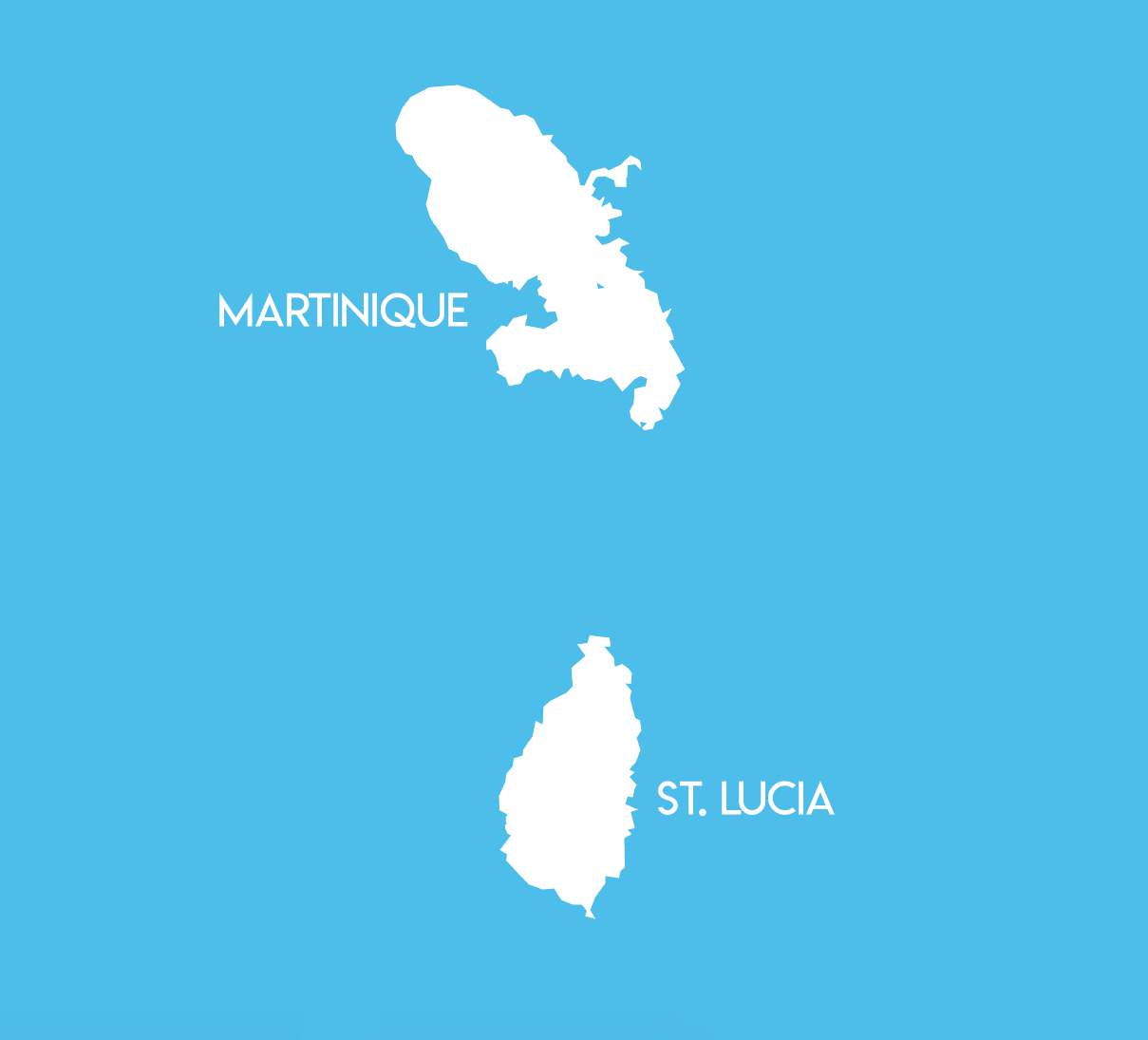
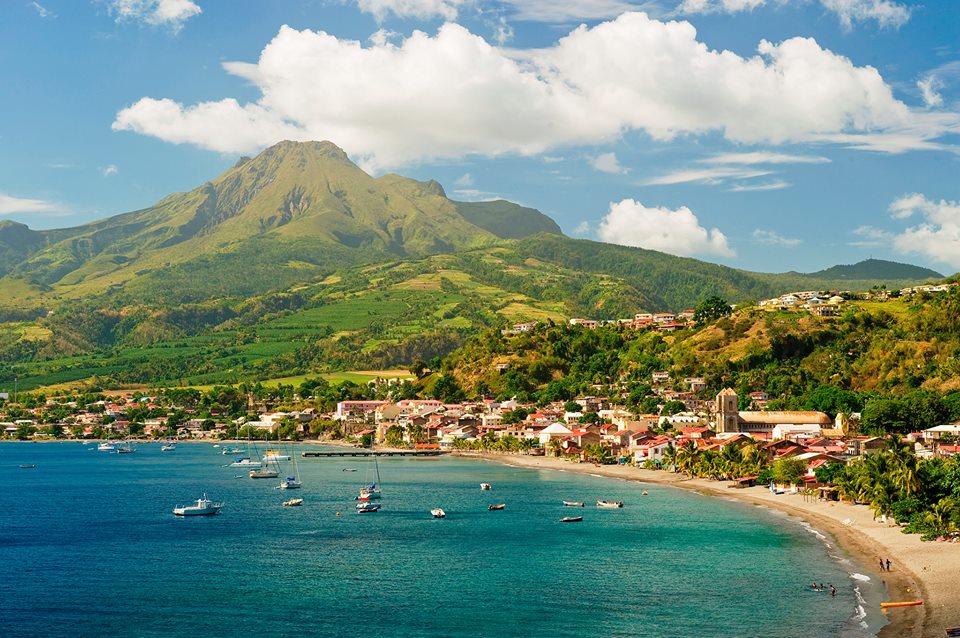
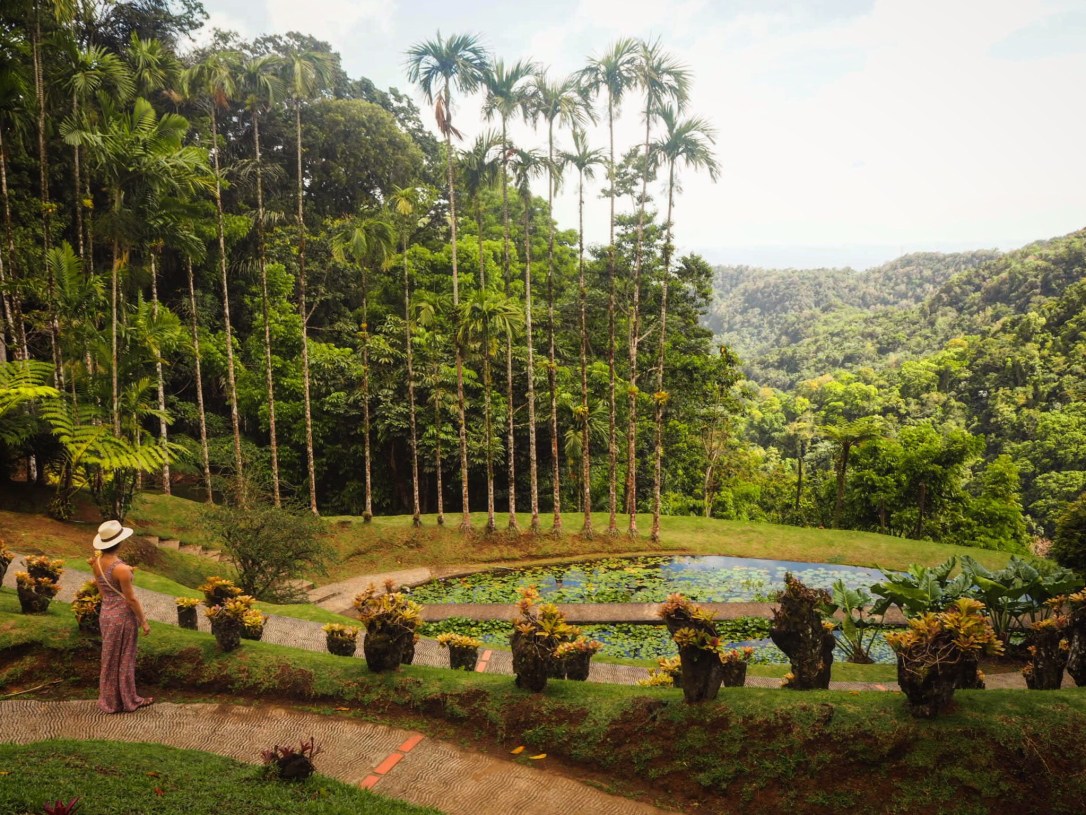
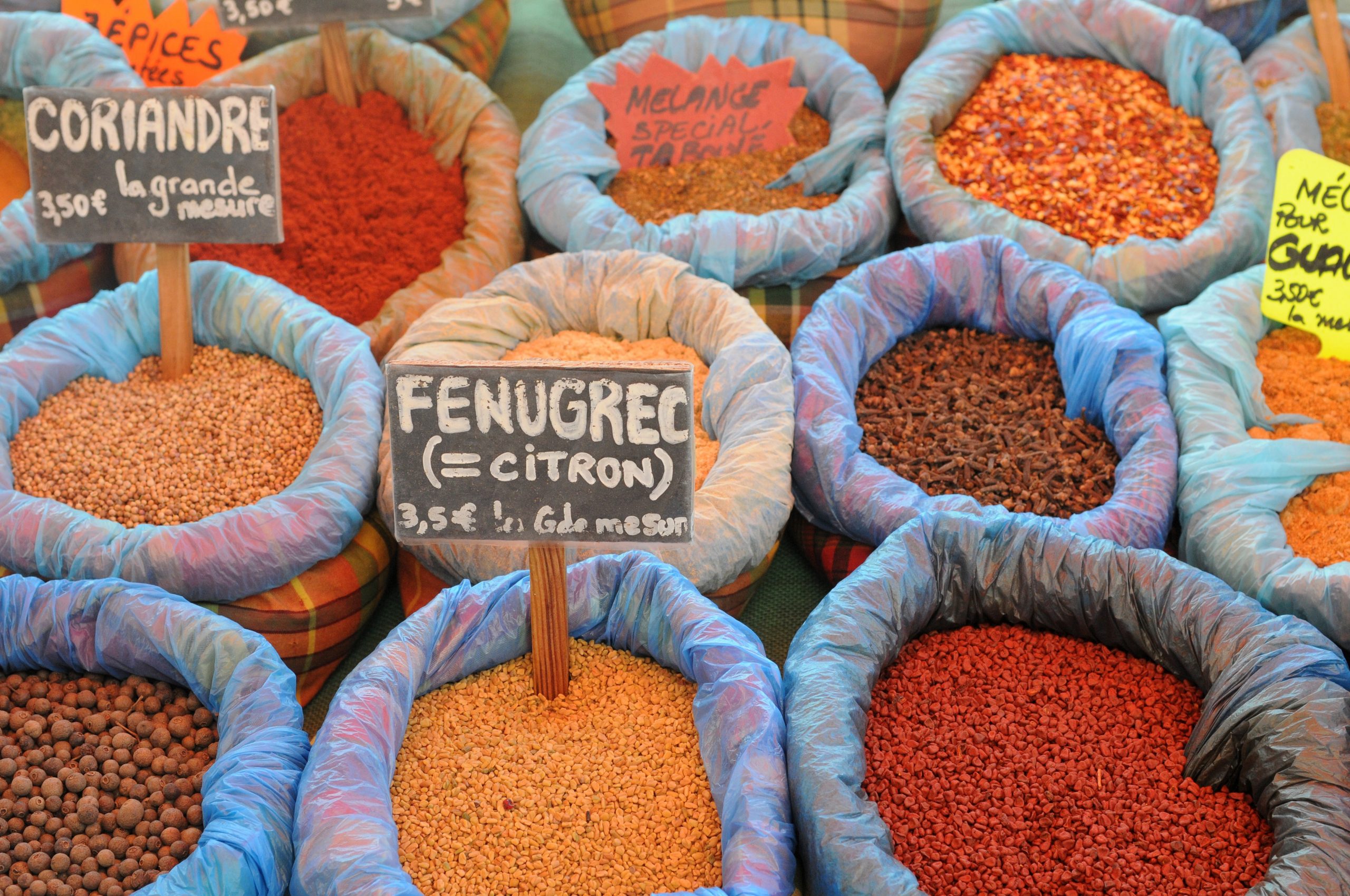
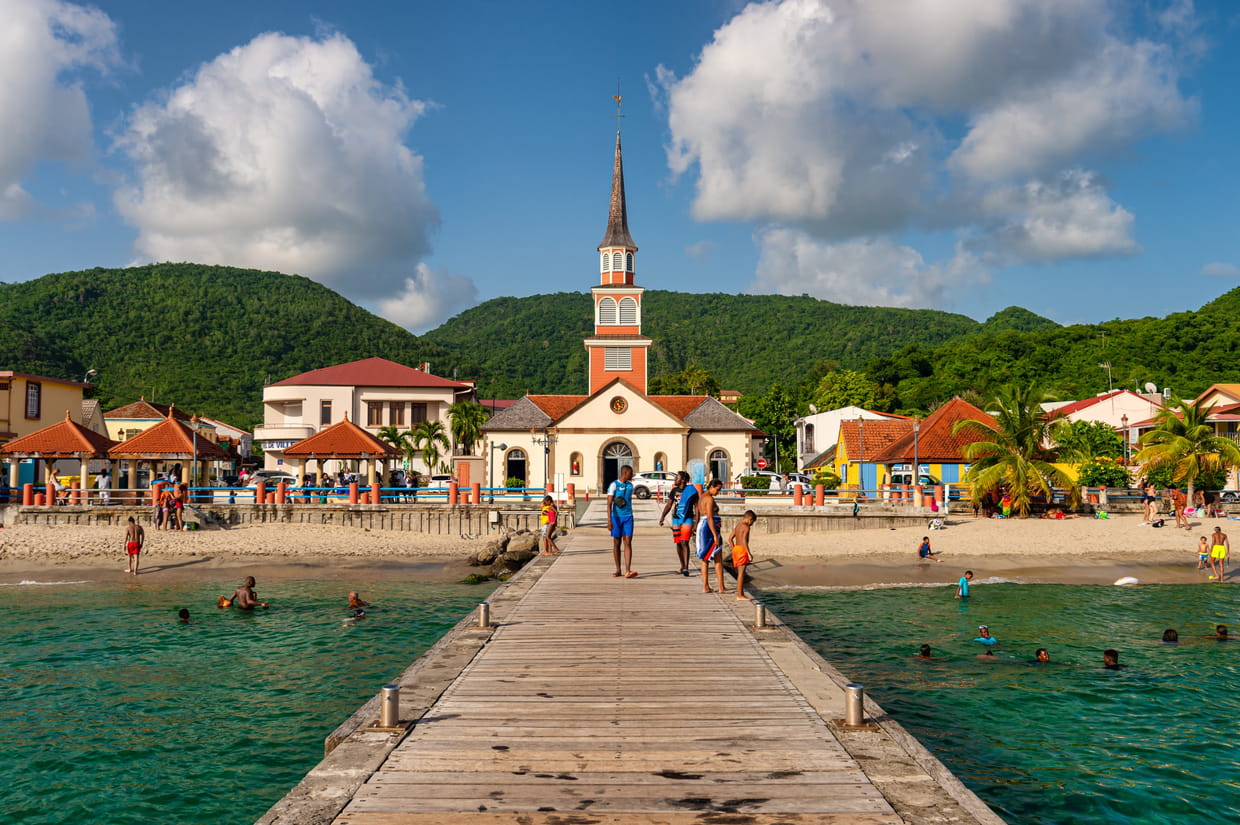
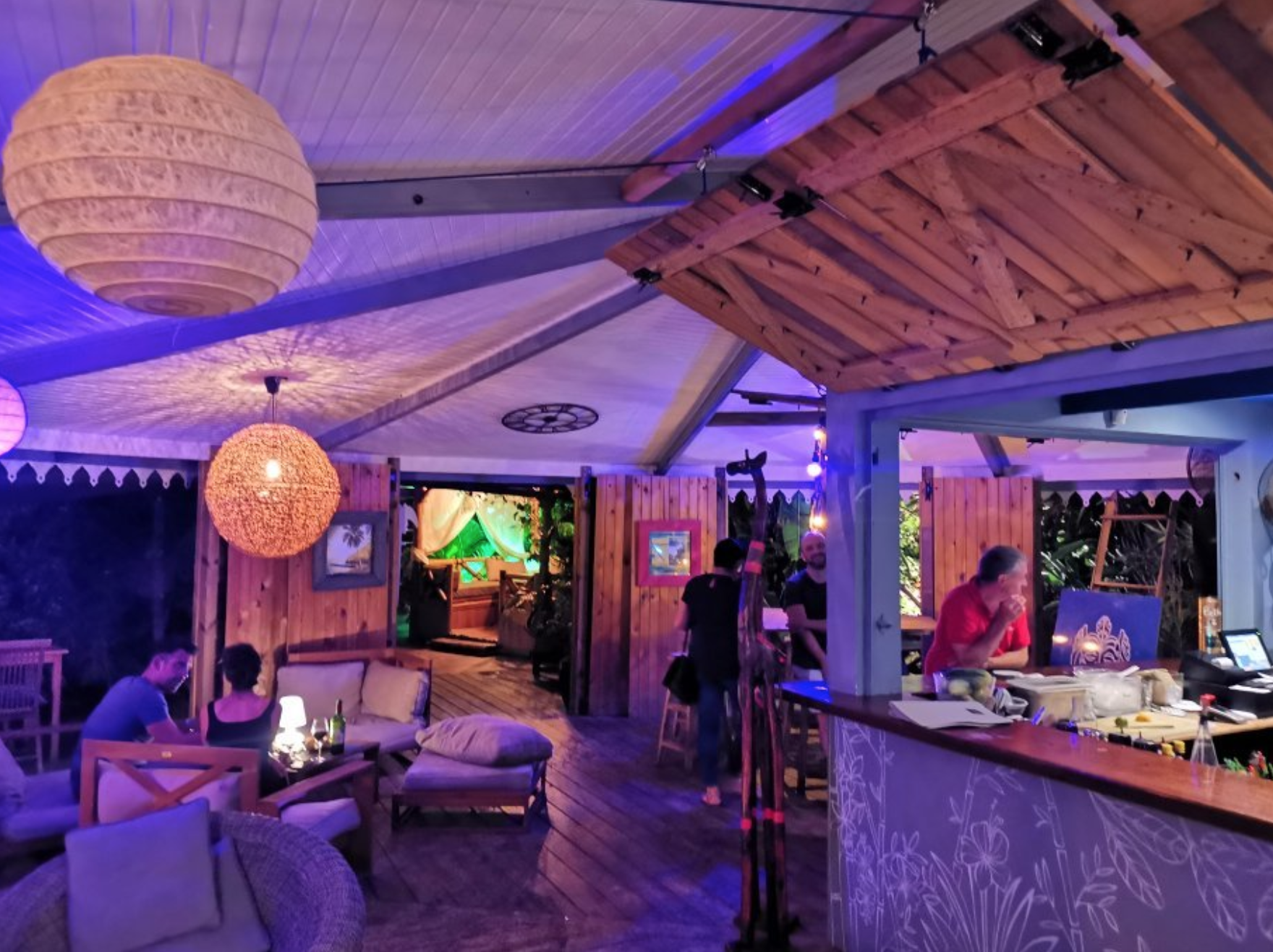
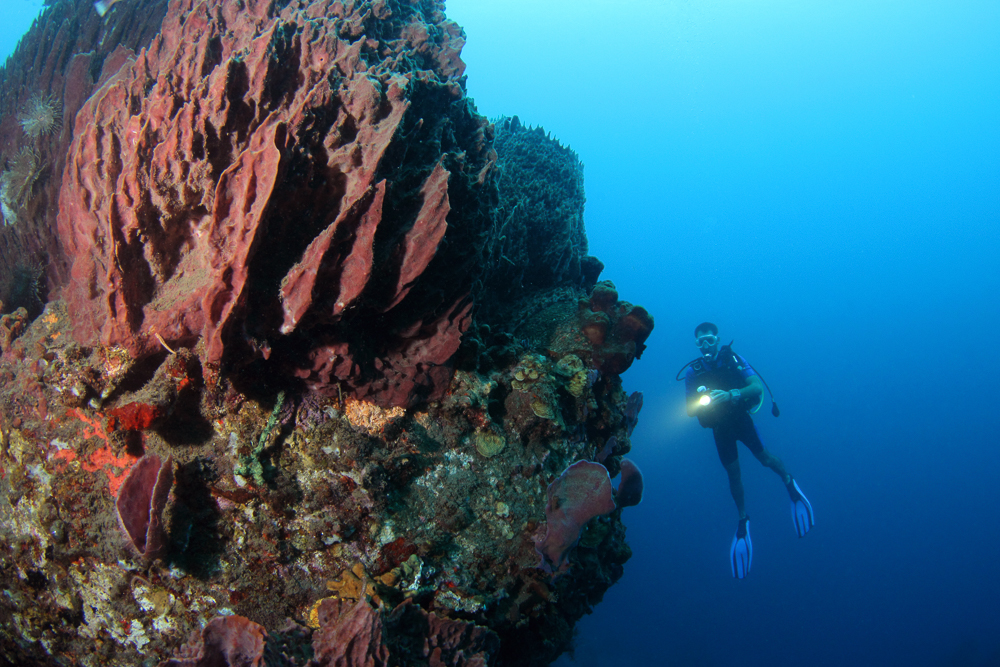
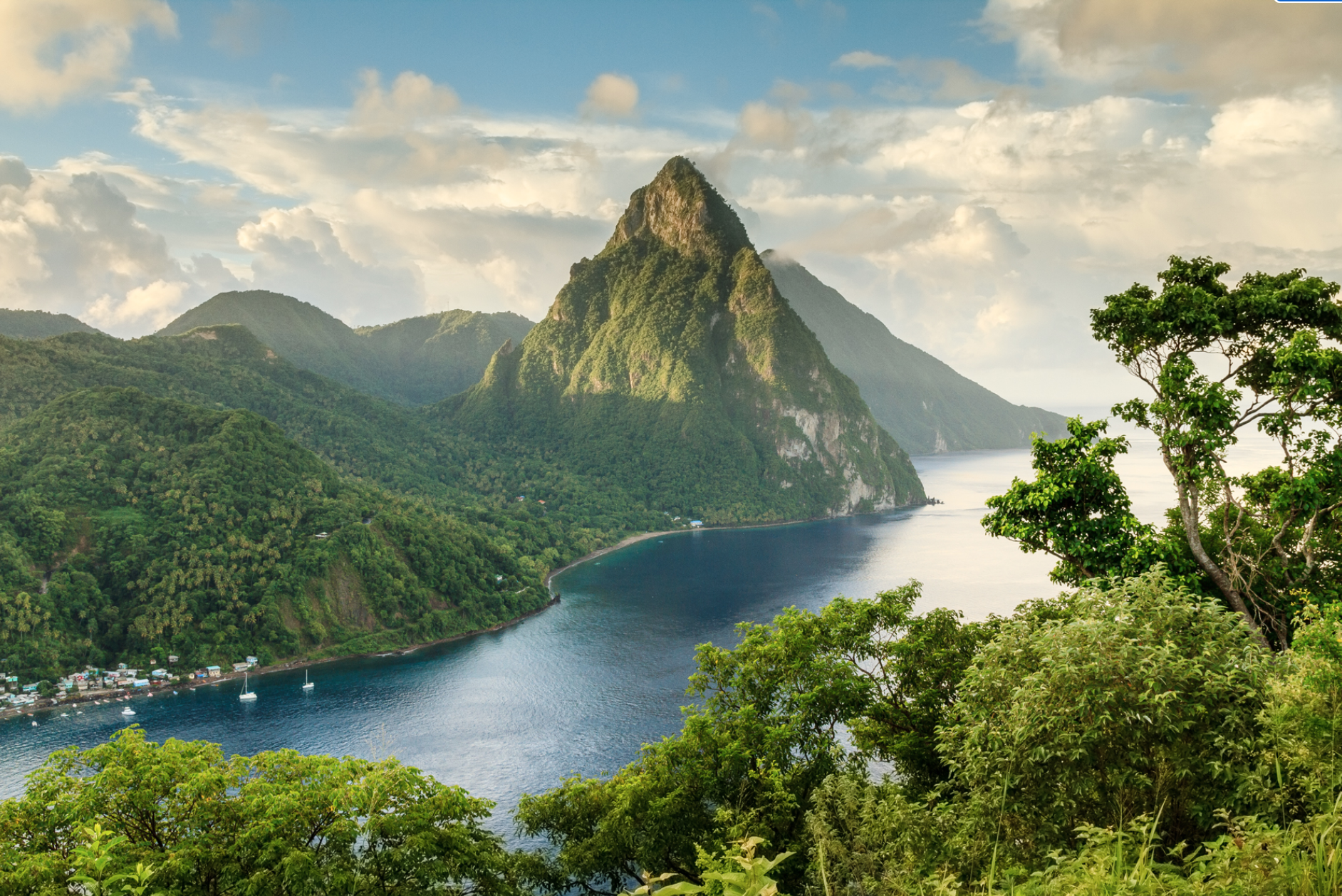
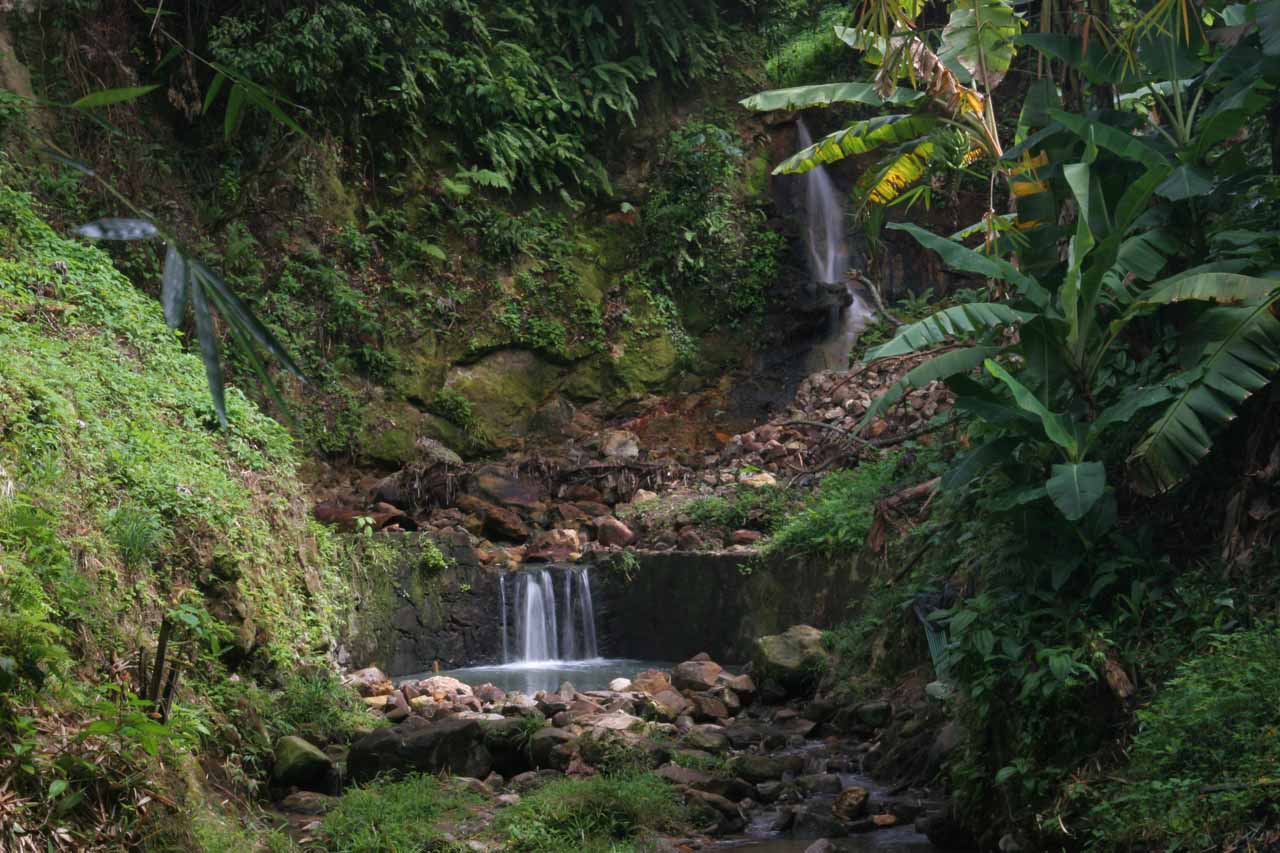
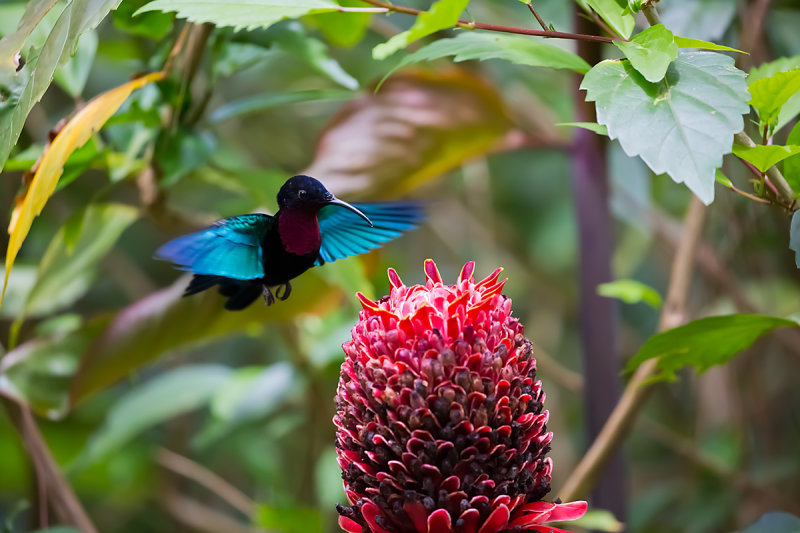

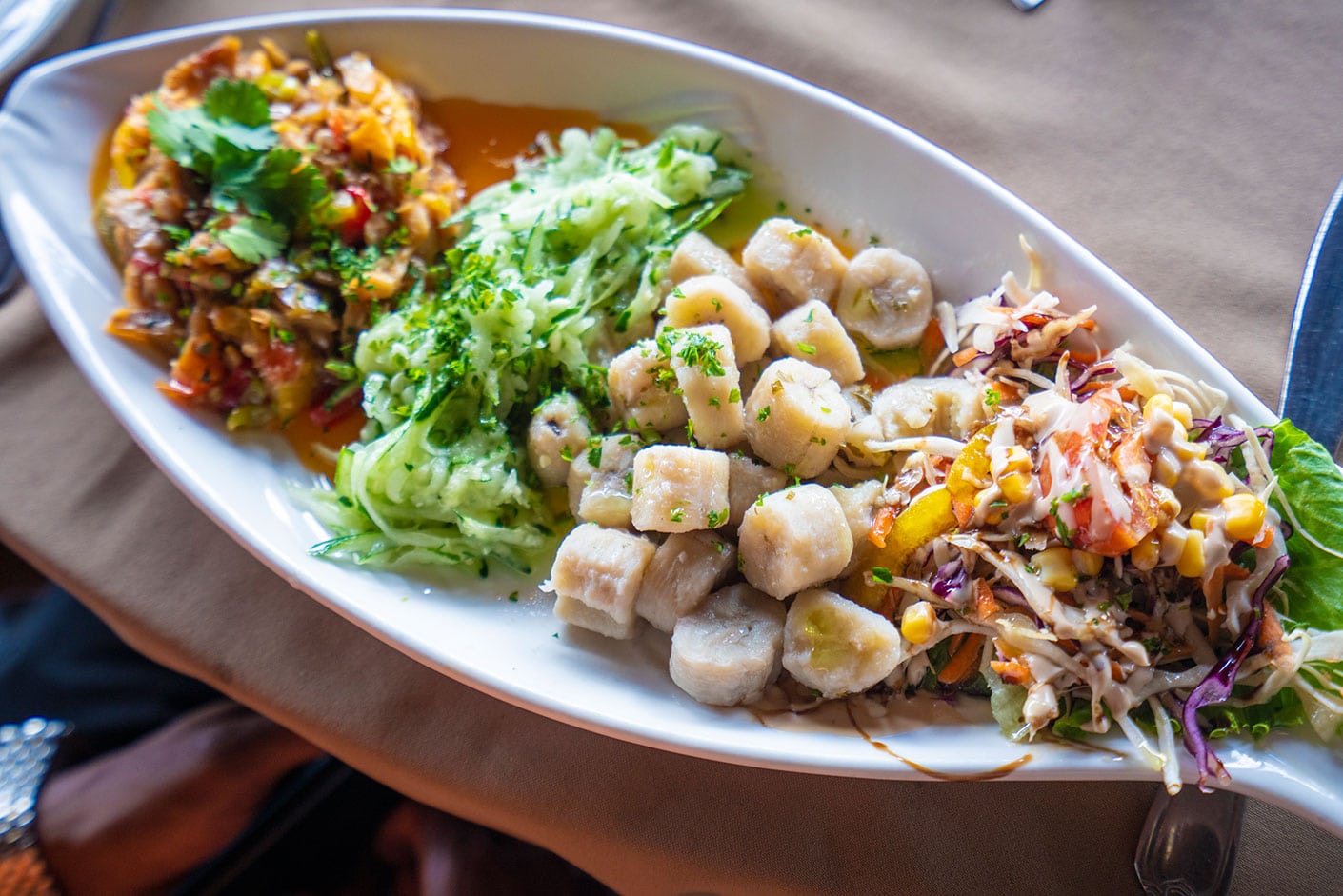
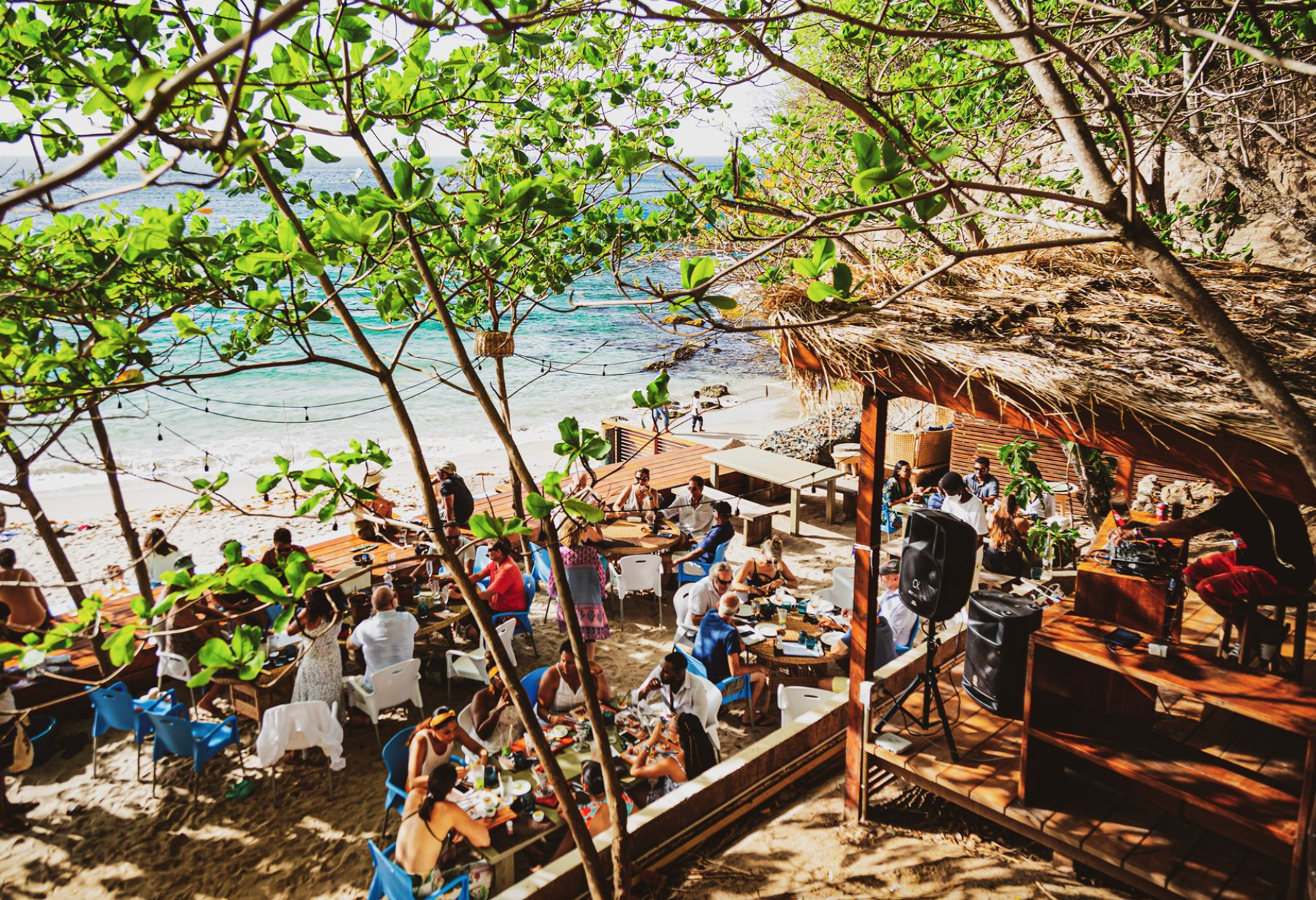
Get Your Bearings
Martinique and St Lucia are two islands that feel a little lost in time, due in large part to their rich mix of luscious rainforest topography and unique cultural and historical features. Each has its own special blend of Caribbean life without the hordes of tourists and bays cluttered with cruise ships.

Martinique
Martinique is a rugged Caribbean island that’s part of the Lesser Antilles. An overseas region of France, its culture reflects a distinctive blend of French and West Indian influences. One writer at the New York Times found himself using the word “serendipity” to often describe the island. A place full of sweet, unexpected surprises.
Saint-Pierre
The city of Saint Pierre looks like a town in France was dropped in the Caribbean and then nearly washed away by the sea. Which is very close to the truth. The cobblestone streets and paint-worn buildings we see today were once part of a thriving port town before the volcano, Mount Pelée that towers over the city, erupted in 1902 and killed 30,000 people. The tragic but fascinating story inspired much of what we know about volcanic activity today.
We can visit the museum dedicated to the eruption and see ruins of the old stone buildings that still line the streets. We can also dive 12 shipwrecks in the bay that sank after being set ablaze by the volcano. Today, the bay is know around the world as the richest shipwreck diving site in the entire Caribbean.
Saint Pierre is a good town to brush up on your basic French skills, as we met very few people that spoke English. Bonne chance!
Fort de France
Spend some time in vibrant Fort de France, the island’s capital and by far the biggest city in the French West Indies. It’s a popular destination for international yachties and French tourists, known for colonial architecture, ornate iron balconies, tropical flowers and beaches.
La Savane park has a statue of Napoleon I’s wife Joséphine, a native of the island. Exhibits at the Martinique Museum of Archaeology and Prehistory focus on the island’s history, especially the pre-Columbian period.
Jardin de Balata is a tropical garden oasis high in the hills with a unique and serendipitous history. Stunning views, a panoramic rope bridge walk through the trees, humming birds, and a peaceful oasis that gives a real sense of the abundant vegetation, both native and generally tropical.
Fort Saint Louis—the hulking fortress that gave the city its name—lies on the far side of La Savane and dates from 1640, although most of what stands today is the result of subsequent additions. Guided tours are informative and fun.
The Grand Marché is a colorful, aromatic covered market. Here you can stock up on crafts, souvenirs, spices, rum and trinkets. At the rear are several decent Creole eateries.
Les Anses d’Arlet
Without a doubt the most charming corner of southern Martinique, Les Anses d’Artlet retains an undiscovered feel, some gorgeous scenery and wonderful beaches. The villages are connected by an often steep and winding coastal road that offers superb glimpses down to the waves below.
Plage Anse d’Artlet is a gorgeous stretch of dark, golden sand in front of Anse d’Arlet Bourg, is backed by the village’s 18th-century church, and is one of the loveliest places to swim in Martinique. The beach is bookended by restaurants and bars, and it’s rarely difficult to find your own spot beneath the various trees that back the beach.
Dine in a Caribbean rainforest at the lush L’Escale, the top-rated restaurant in town. Pair a nice bottle of wine with the rich ambient lighting and the highly recommended snapper with chorizo entreé for an evening to remember.
Le Diamant
This quiet, scattered town is the perfect anchorage for scuba dives at Le Rocher du Diamant (Diamond Rock).
Diamond Rock is thought to be the most beautiful dive site in Martinique, and one with a strong reputation all over the Caribbean. This immense volcanic rock towers over 550 feet high and stands over a mile from the coast. There are sites for everyone depending on your dive certification and your experience. To the north, a sheltered cove is ideal for first timers; for experienced divers, a beautiful drop-off plummets down to 130 feet along the rock. To the west, a breathtaking cathedral-shaped crack starting around 50 feet actually pierces the whole island from side to side.
The diversity and abundance of marine life are astonishing, matching the dramatic geological features: many different tropical reef fish, turtles, moray eels, Spanish mackerels, crustaceans hidden in the crevices. The flora is also quite diverse with gorgonian fans, soft corals, sponges, anemones.
On land at Le Diamant is the haunting Mémorial Cap 110, which lies on a grassy headland overlooking the sea and is made up of 15 Easter Island–esque figures in stone, heads hung in mourning. It commemorates the scores of enslaved people who lost their lives in a shipwreck off the coast here in April 1830, and more generally, the tens of thousands of enslaved Africans who were taken to Martinique as part of the transatlantic slave trade.
Le Marin
The yachting capital of Martinique, Le Marin is also known for its colorful August carnival and its Jesuit church, circa 1766. Most of the buildings are white and very European. The marina, a hub for charter boats, is often buzzing with charter sailboats departing and celebrities on impressive yachts pulling in. There are waterfront restaurants and clubs that are a magnet for the younger crowd as well as for sailors and tourists at large.
St Lucia
St Lucia looks like an island lost in time. Her twin peaks (known as The Pitons) rear up from the sea and feel reminiscent of a shot from Jurassic Park. St Lucia is as beautiful and lush as it is rich in history.
For hundreds of years, the island has been a melting pot of cultures; in many ways, it was a gateway to the New World. Subsequently, the island has a strong sense of heritage and cultural identity that locals vigorously celebrate to this day.
Soufrière
The town’s name comes from the sulfurous aromas created by the the Pitons volcanoes that watch over the town. Explore the square and get to know the culture of Saint Lucia, or head out to some of the natural wonders of the islands. The Saint Lucia Diamond Falls Botanical Gardens are also located in this town, and some visitors use Soufrière as a base to hike out to Toraille to cool off in the natural rainforest.
The Diamond Falls Botanical Gardens is one of the best known sites on St Lucia—a six acre peaceful retreat from the outside world. Enjoy the beauty and sultry warmth of the tropics while walking through lush fertile vegetation and marveling at the diverse range of tropical flowers and plant life. After a long walk around the grounds, soothe sore muscles in the historic hot mineral baths. It was originally built in 1784 for the French troops of King Louis XVI so they could benefit from the therapeutic waters.
Spend a full day touring the natural beauty around Soufrière. Hike a 45-minute stairway to the clouds to view the Pitons. Explore the geothermal landscape surrounding the now dormant volcanoes, before take a healing bath in the hot sulphur spring volcano mud bath, and end your day under cascading waterfalls.
If it’s too hot to hike we can simply take the open-air aerial trams through the heights of the rainforest. Ascend noiselessly through the lush terrain, for a magical view of nature alighted upon by playful hummingbirds. Once we’re at the top, tranquility comes to an end as we can zip back down through the rainforest over 16 different platforms.
Back in the water we can visit six dive sites off the coast. From the aptly named Turtle Reef, to the wall at the base of the Petit Piton, and the vibrant colors at the reef known as Fairyland, it is impossible to get bored beneath the surface.
We’ll top off our time in Soufrière with dinner at Orlando’s. Named one of the World’s Best Restaurants by Travel + Leisure and Food & Wine, Orlando’s is set in the garden courtyard of the owner/chef’s home. Orlando uses only local ingredients from local farms and vendors—organic where possible—and embraces the concept of farm to table.
Anse Le Ray
A sleepy fishing village on the west coast, Anse La Raye offers a slice of the real Saint Lucia with small boats bobbing in the little port, old wooden houses sitting beneath palm trees and banana plantations blanketing the hills.
French and English colonial-era architecture can be seen on the streets—there’s a little bakery producing Creole bread and coconut turn-overs in a wood-fired oven—and in an uninhibited warmth to the local people. It’s a place to relax and unwind in a tranquil setting, soak up low-key local culture.
The Friday Night Fish Fry in Anse La Raye not to be missed. A festive evening with music, dancing, a wide variety of seafood dishes in a very relaxed and charming atmosphere. The entire street is closed to traffic and visitors can sit and relax to cool Caribbean rhythms while dining on delicious local, freshly caught and cooked, fried, steamed, barbequed fish dishes.
Off the coast of Anse La Ray are three popular dive sites on St Lucia. The dramatic Anse La Ray Wall is covered in sea whips, gorgonians and soft coral. The steep slope of the Anse Couchon has large boulders covered in sponges and gorgonians where seahorse, scorpion fish and cleaner shrimps are known to be found. Last but never least, the wreck of the Lesleen M—a 165 foot freighter that sunk in 1986. It is covered with deep sea fans and sponges with a variety of reef fish. Schools of fish can be found in and around the wreck, as well as moray eels, frogfish, lobsters and more.
Gros Islet
Visit Pigeon Island, a national park that was once separate from St Lucia until the island built a causeway between the two. Visitors can hike to the top and explore the ruins of Fort Rodney, which was built by the English to fight the French. You can really feel what it was like guarding the island in the 1700s.
Learn to cook like a Lucian at Spices Cooking Studio. Host Jenni takes you for a tour of her herb garden that is said to be more of a jungle than neatly trimmed garden with boundless fresh and fragrant herbs. Return to the kitchen to learn to make a variety of Caribbean meals with local ingredients, and finally sit down to enjoy the fruits of your labor with a multi-course meal.
Top off our time in Gros Islet with dinner and drinks at The Naked Fishermen. Nestled on a natural cove just below Cap Maison, lounge on the beach eating Creole salt fish with spiced mango or the daily surf ceviche and drinking one of their signature cocktails.
EXPLORE
Have a play around on this interactive map of our route to explore more places and activities available during our trip.
ACCOMMODATIONS
Accommodations include use of the following:
- 3 queen cabins, each with private ensuite bath with electric toilet, wash basin and separate shower stall. All cabins have ample storage, a panoramic window, air conditioning, two fans, US 110v outlets and dimmable recessed lighting.
- Social areas include an upper deck lounge with sectional couch and sunbed area with 360 degree view. Forward deck has spacious lounge area with adjustable reclining seating, trampoline and sunning areas. Aft deck offers lounge area plus alfresco dining. Salon offers lounge area with coffee table plus flat screen TV with many movies and USB capabilities.
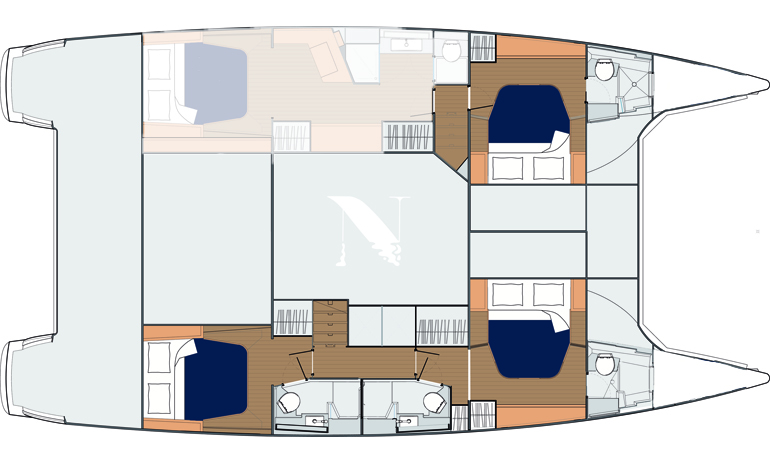
FYI
Flight info: arrive/depart Martinique Aimé Césaire International Airport (FDF) or Hewanorra International Airport (UVF) on St Lucia
Currency:
Martinique – Euro
St Lucia – Eastern Caribbean Dollar (EC)
Electricity: On board Neverland is US 110v; ashore is EUR 220v/50hz
Communications: Neverland has on board wi-fi with high speed internet available whenever we’re within range of mobile towers
We’ve got you covered: bath & beach towels, bedding, shower essentials, ScubaPro snorkel & dive gear, and dive lights
What to bring: soft-sided luggage, swimwear, sunscreen, beachwear, rain jacket, hat, sunglasses, music, books, camera, and personal snorkel/dive gear and wetsuit if you prefer
NEVERLAND CRUISES LLC
+1.305.912.SAIL
SAIL@NEVERLAND.CRUISES
SOCIAL
CONTACT
Send us a message below with thoughts or questions. Visit the contact page to inquire about a trip on Neverland.


